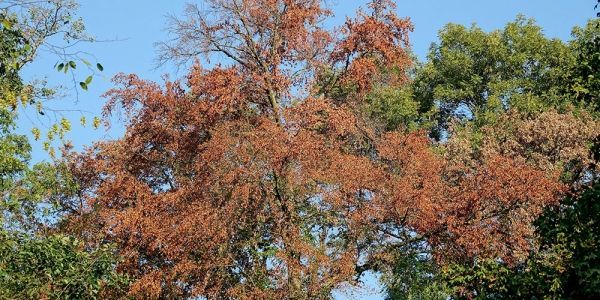Between April and August this year, Switzerland and central Europe have experienced the driest summer season since 1864. Especially the forest seems to suffer from this dry spell: As early as August, trees began to turn brown this year. A current study by the University of Basel indicates now that native forest trees can cope much better with the drought than previously expected. It is, however, too early to give the all-clear as a consistently warmer and dryer climate might still put our native forests at risk.
Trees depend on photosynthesis to produce sugar for their metabolism. To this end, they have to absorb carbon dioxide (CO2) through small pores on their leaves. Considerable amounts of water evaporate in this process with adult beech trees losing up to 400 liters a day.
This water has to be replaced on a daily bases by water uptake from the soil. The water is then transported from the roots to the leaves via vessels in the trunk. For the water to be transported, it requires a low pressure that is created by the loss of water in the leaves.
Continue reading at University of Basel
Image via Dr. Urs Weber, University of Basel


